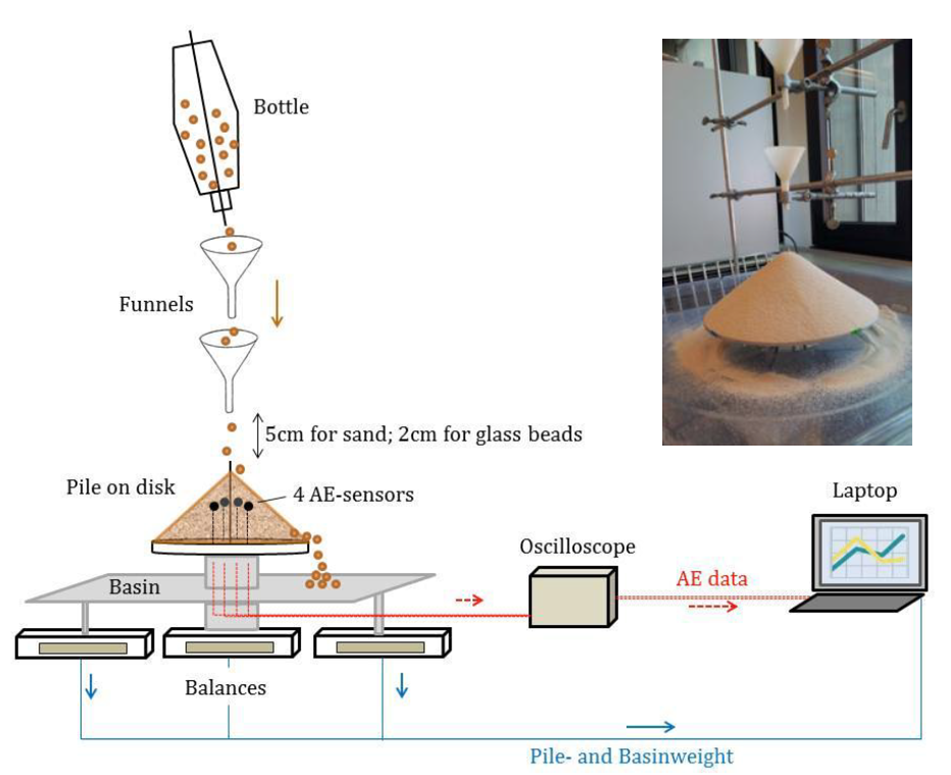Can acoustic emissions patterns signal imminence of avalanche events in a growing sand pile?
Gravity driven mass release is often triggered abruptly with limited precursory cues to indicate imminent failure and thus limiting early warning. Evidence suggests that with increased mechanical loading of a slope, numerous local damage events marking friction between rearranged particles or breakage of roots release strain energy as elastic waves measurable as acoustic emissions. We examined the potential predictability of mass release events from preceding acoustic emission (AE) signatures in a well-known and simple model system of a growing sand pile. We installed four AE-sensors within the core of a 30 cm (diameter) sand pile fed by a constant input of grains and mounted on a balance. Subsequent to the convergence of the slope to dynamic angle of repose, sand avalanche across the bottom boundary were monitored by abrupt mass change and by the amplitudes and number of AE events (recorded at high frequency and averaged to 0.2 s). We detected a systematic change of AE-patterns characterized by systematically decreasing AE standard deviation prior to each mass release. Although the lead time following minimum AE standard deviation was relatively short (10s of seconds), the AE signature already started to change minutes before the mass release. Accordingly the information embedded in AE signal dynamics could potentially offer larger lead times for systems of practical interest.

Team: Melanie Vögtli, Peter Lehmann, Dani Or, Dani Breitenstein
